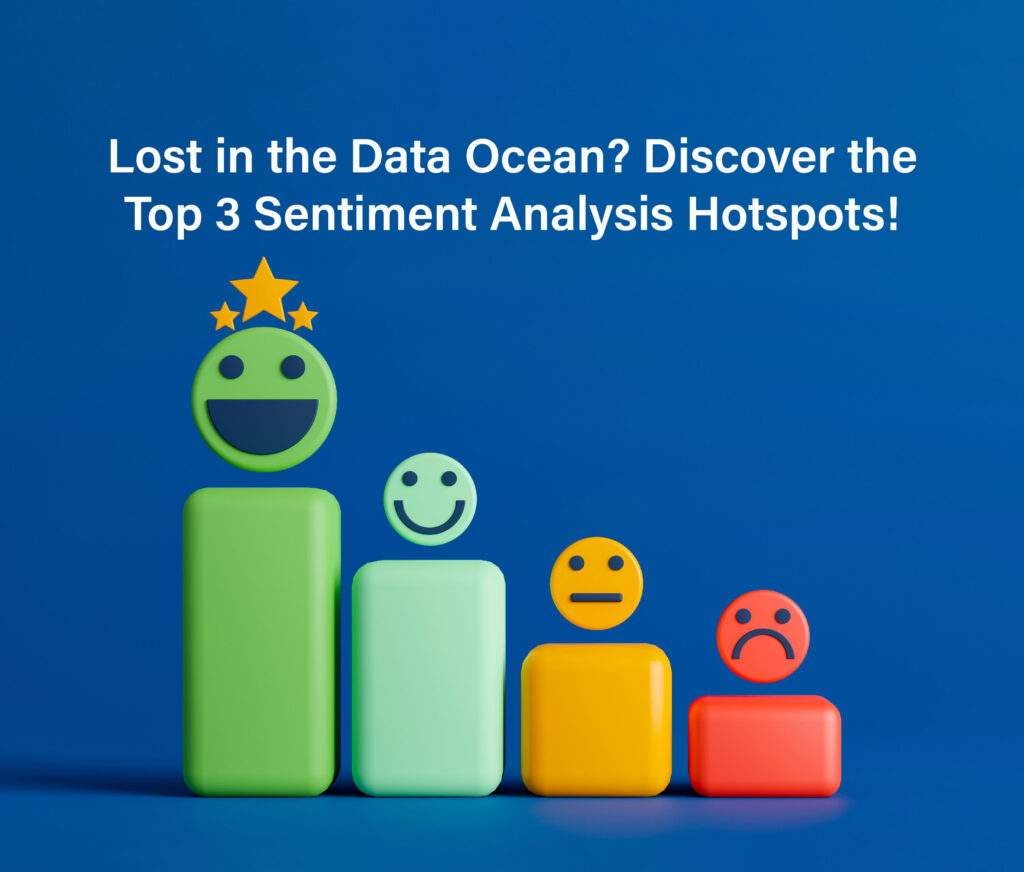In the 21st century, social media is a hub of opinions, from praise to complaints. No need to read minds anymore. Customer feedback is now scattered across various online platforms, changing the landscape of customer service. Interactions are highly visible, with professionals in social media, branding, PR, and marketing worried about missing out.
Manual monitoring of this feedback is now impossible due to the sheer volume. To understand consumer perception efficiently, turning to sentiment analysis is the best option instead of traditional market research methods.
Let’s learn more about what analyzing sentiments is all about, along with every aspect related to the process.
What is Sentiment Analysis?
Sentiment analysis, also referred to as opinion mining, involves discerning whether text expresses positive or negative emotions. Businesses extensively employ it to study social media data for sentiment, evaluate brand repute, and get to know customers.
Emotions Unwrapped: Types of Sentiment Analysis
 Sentiment analysis goes beyond polarity (positive, negative, and neutral) to detect emotions, urgency, and intentions. You can customize categories based on your analysis goals. Here are popular types preferred for analyzing sentiments.
Sentiment analysis goes beyond polarity (positive, negative, and neutral) to detect emotions, urgency, and intentions. You can customize categories based on your analysis goals. Here are popular types preferred for analyzing sentiments.
1. Graded
You can think about extending your polarity categories to cover various intensities of positive and negative if polarity precision matters to your company:
- Very positive
- Positive
- Neutral
- Negative
- Very negative
This is widely known as graded or fine-grained analysis and it can be used to evaluate 5-star reviews, for instance:
- Very Positive = 5 stars
- Very Negative = 1 star
2. Emotion detection
Emotion detection goes beyond polarity to identify emotions such as happiness, frustration, anger, and sadness.
Emotion detection systems often rely on lexicons or advanced machine learning algorithms.
Using lexicons can be challenging because people express emotions differently. Words like “bad” or “kill” can convey both anger and happiness depending on the context.
3. Aspect-based
Typically, when analyzing text sentiments, you’d want to identify the specific aspects or features that people mention positively, neutrally, or negatively.
This can assist in cases like a product review where a statement such as “The camera’s battery life is too short” conveys a negative opinion specifically about the battery life.
4. Multilingual
This type can be a bit challenging to perform. It requires preprocessing and various resources, some of which can be found online (like sentiment lexicons), while others need to be developed (such as translated corpora or noise detection algorithms). However, coding skills are necessary to utilize these resources effectively.
You can automatically detect the language in texts and then train a sentiment analysis model for classifying texts in your preferred language.
Why Sentiment Analysis Matters?
Humans now freely express their thoughts and feelings, which makes analyzing sentiments crucial for monitoring and comprehending emotions in diverse data.
By analyzing customer feedback from surveys and social media, brands can understand what satisfies or annoys customers and customize their offerings accordingly.
Using this technique to analyze thousands of open-ended responses in customer satisfaction surveys can help uncover the reasons behind customer happiness or dissatisfaction at different stages of their journey.
If you want to monitor brand sentiment to quickly identify unhappy customers and respond promptly, or if you want to compare sentiments over time and determine the need for action, you can analyze qualitative data to understand the reasons for a particular sentiment.
Lost in the Data Ocean? Discover the Top 3 Sentiment Analysis Hotspots!
 In the digital age, public sentiment towards your brand is crucial for evaluating customer satisfaction. Consumers seek relatable, memorable experiences, both online and offline. The stronger the connection, the more feedback and purchases you can expect. Research shows that 62% of consumers emphasize the need for businesses to prioritize their concerns, with 60% indicating a willingness to increase purchases in response. Conversely, 71% of Twitter users express discontent with brands on the platform.
In the digital age, public sentiment towards your brand is crucial for evaluating customer satisfaction. Consumers seek relatable, memorable experiences, both online and offline. The stronger the connection, the more feedback and purchases you can expect. Research shows that 62% of consumers emphasize the need for businesses to prioritize their concerns, with 60% indicating a willingness to increase purchases in response. Conversely, 71% of Twitter users express discontent with brands on the platform.
Capturing and analyzing both positive and negative conversations can enhance customer experience. Sentiment analysis can assist in this process.
1. Text analysis for surveys
Surveys provide direct customer connection and valuable feedback. Analyzing responses for sentiment scores is swift. Craft questions/commands for qualitative customer experience metrics, such as:
- Describe your recent experience.
- Rate your experience compared to expectations.
- What would you change about your experience?
Seek honest, detailed responses for effective sentiment analysis. Avoid yes/no questions for better analysis.
Customer reviews are yet another excellent source for finding text feedback.
2. Text analysis for customer reviews
Customer reviews are crucial in today’s market. 72% won’t act without them and 95% read reviews before buying. Platforms like G2 offer valuable insights. Unlike surveys, reviews are unsolicited, providing honest and thorough feedback.
Analyzing sentiment scores (positive, negative, neutral) can reveal unaddressed issues, making negative feedback especially valuable for improvement.
3. Text analysis for social media
You can get text data from social media analysis as well.
Sentiment analysis tools track public social media data, including platforms like Twitter and Facebook, to identify brand mentions and assess sentiment scores. This approach is particularly valuable since users tend to share unfiltered feedback on social media.
One of the most powerful tools for this purpose is Twitter sentiment analysis. Twitter data analysis helps businesses understand customer sentiment, trends, and feedback.
Surprisingly, 70% of companies neglect social media feedback. This untapped well of big data holds potentially crucial insights.
Parting words
Sentiment analysis has various applications in business, including brand monitoring, product analytics, customer service, and market research. Leading brands and even entire cities incorporate it into their systems and analytics to improve efficiency and accuracy.
Sentiment analysis tools are no longer just a tech fad; it’s becoming essential for all modern companies. Leveraging a powerful sentiment analysis API can automate the process, providing businesses with real-time insights into customer sentiment. It helps us gain new insights, understand customers better, and empower our teams to work more effectively.


